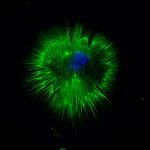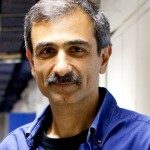Link to Pubmed [PMID] – 30745033
Link to DOI – 10.1016/j.stemcr.2019.01.007
Stem Cell Reports 2019 Mar; 12(3): 461-473
Satellite cells are responsible for skeletal muscle regeneration. Upon activation, they proliferate as transient amplifying myoblasts, most of which fuse into regenerating myofibers. Despite their remarkable differentiation potential, these cells have limited migration capacity, which curtails clinical use for widespread forms of muscular dystrophy. Conversely, skeletal muscle perivascular cells have less myogenic potential but better migration capacity than satellite cells. Here we show that modulation of Notch and PDGF pathways, involved in developmental specification of pericytes, induces perivascular cell features in adult mouse and human satellite cell-derived myoblasts. DLL4 and PDGF-BB-treated cells express markers of perivascular cells and associate with endothelial networks while also upregulating markers of satellite cell self-renewal. Moreover, treated cells acquire trans-endothelial migration ability while remaining capable of engrafting skeletal muscle upon intramuscular transplantation. These results extend our understanding of muscle stem cell fate plasticity and provide a druggable pathway with clinical relevance for muscle cell therapy.


